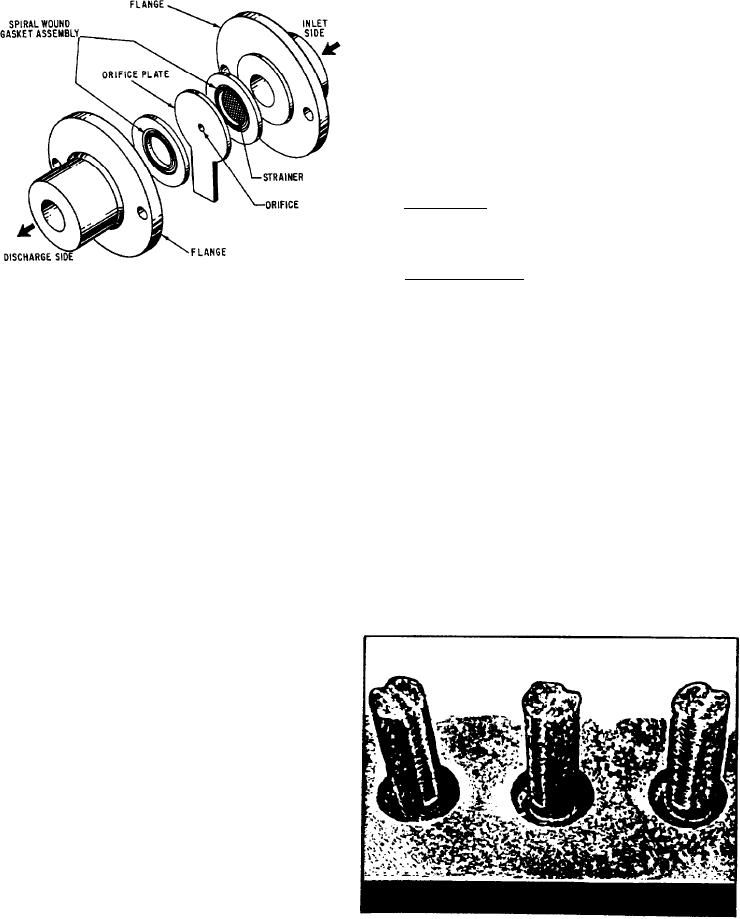
plugs (fig. 6-21) also are used in some strainers
to trap iron and steel particles carried by fluid.
Studies have indicated that even particles as small
as 1 to 5 microns have a degrading effect, causing
failures and hastening deterioration in many cases.
There will always be controversy over the
exact definitions of filters and strainers. In the
past, many such devices were named filters but
technically classed as strainers. To minimize
the controversy, the National Fluid Power
Association gives us these definitions:
FILTER --A device whose primary function
is the retention, by some porous medium, of
insoluble contaminants from a fluid.
STRAINER--A coarse filter.
Figure 6-20.--Constant-flow drain orifice.
To put it simply, whether the device is a filter
or a strainer, its function is to trap contaminants
MAINTENANCE
from fluid flowing through it. "Porous medium"
simply refers to a screen or filtering material that
A strainer is installed just ahead of each steam
allows fluid flow through it but stops various
trap. The strainer must be kept clean and in good
other materials.
condition to keep scale and other foreign matter
from getting into the trap. Scale and sediment can
clog the working parts of a steam trap and
MESH AND MICRON RATINGS
seriously interfere with the working of the trap.
Steam traps that are not operating properly
Filters, which may be made of many materials
can cause problems in systems and machinery.
other than wire screen, are rated by MICRON
One way to check on the operation of a steam trap
size. A micron is one-millionth of a meter or
is to listen to it. If the trap is leaking, you will
39-millionths of an inch. For comparison, a grain
probably be able to hear it blowing through.
of salt is about 70 microns across. The smallest
Another way to check the operation of steam traps
particle visible to the naked eye is about
is to check the pressure in the drain system. A
leaking steam trap causes an unusual increase in
pressure in the drain system. When observing this
condition, you can locate the defective trap by
cutting out (isolating from the system) traps, one
at a time, until the pressure in the drain system
returns to normal.
You should disassemble, clean, and inspect
defective steam traps. After determining the cause
of the trouble, repair or replace parts as required.
In some steam traps, you can replace the main
working parts as a unit; in others, you may have
to grind in a seating surface, replace a disk, or
perform other repairs. You should reseat defective
trap discharge valves. Always install new gaskets
when reassembling steam traps.
FILTERS AND STRAINERS
Fluids are kept clean in a system principally
by devices such as filters and strainers. Magnetic
Figure 6-21.--Magnetic plugs.
6-15

